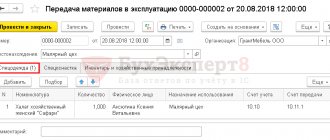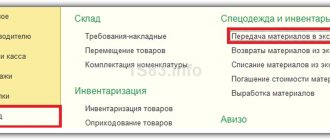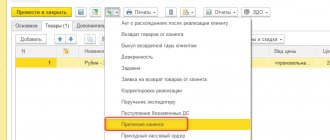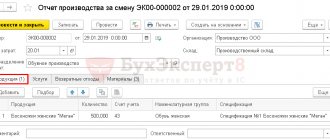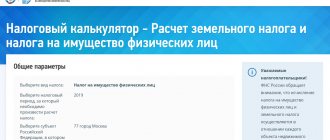Currently watching: 3494
In this article, I will not rewrite the regulations (but will only list them below) that regulate the accounting of materials at a manufacturing enterprise. This is quite enough on the Internet. Here I will talk about practical accounting of materials in production.
Accounting for materials in production is regulated by:
— PBU 5/01 “Accounting for inventories” (Order of the Ministry of Finance dated 06/09/2011 No. 44n); — Methodological guidelines for accounting of inventories (Order of the Ministry of Finance dated December 28, 2001 No. 119n); — Methodological guidelines for accounting of special tools, special devices, special equipment and special clothing (Order of the Ministry of Finance dated December 26, 2002 No. 135n).
As I explain at seminars, learn to read and apply the law, and you will be happy.
But in fact, accounting for materials in the production of products is a fairly voluminous area of work. Moreover, if your company produces finished products for a wide range of consumers. Consequently, the success of the company’s development and its further existence depends on the correct management of this area. Let's look at the stages of movement and accounting of raw materials and materials in production.
Documenting
Document the release (transfer) of materials into operation (production) with the following documents:
- limit intake card (form No. M-8) is used for the systematic use of materials, when standards and plans for their consumption have been approved;
- an invoice for the release of materials to the third party (Form No. M-15) is used in cases where materials are transferred to a geographically remote unit;
- the demand invoice (Form No. M-11) or warehouse registration card (Form No. M-17) is used in other cases.
Such rules are established by paragraphs 100, 109 and 126 of the Methodological Instructions, approved by Order of the Ministry of Finance of Russia dated December 28, 2001 No. 119n.
Advice : standard forms of documents that are in albums of unified forms and approved by resolutions of the State Statistics Committee of Russia are not necessary to use. Therefore, organizations have the right to develop a single act for the write-off of materials. It can indicate only mandatory details and those that are important for the organization based on the specifics of the activity.
Use the same documents to write off property worth up to 40,000 rubles. (another limit established in the accounting policy), which in other respects corresponds to fixed assets. This is explained by the fact that in accounting its value is written off similarly to materials (paragraph 4, paragraph 5 of PBU 6/01, letter of the Ministry of Finance of Russia dated May 30, 2006 No. 03-03-04/4/98).
Documentation
An organization can use standardized forms of documentation to record the disposal of materials from a warehouse, or it can use independently developed forms. Their presence is reflected in the accounting policies.
Unified forms of primary documents for the release of goods and materials for production needs are:
- limit-fence card (according to f. M-8);
- demand-invoice (according to Form M-11);
- invoice (form M-15);
- invoice for internal movement (form TORG-13 or a form developed by the organization).
All forms are standard and can be used regardless of the industry.
Documents confirming other disposals from the warehouse (for example, gratuitous transfer, write-off of shortages, damage, theft) can serve as various acts for the write-off of MC, signed by members of a commission created in the organization, TTN, applications for leave to the outside.
The sale of goods and materials is formalized taking into account the applicable taxation system, the specifics of current legislative acts, etc. The release to buyers, legal entities or individuals, is carried out on the basis of contracts with them. An invoice is issued for the release of goods and materials to the third party, and, if necessary, an invoice and other documents for sale. Transportation of goods and materials from the warehouse is issued by TTN.
Accounting
Materials transferred for production (operation) should be written off as expenses at the time they are released from the warehouse, that is, at the time of drawing up documents for the transfer of materials into operation (production) (clause 93 of the Methodological Instructions, approved by order of the Ministry of Finance of Russia dated December 28, 2001 No. 119n).
Tip : to determine the moment of actual use of materials in production, you can use additional reporting forms. For example, a report on the use of materials in production. This will allow you to reduce the costs of the reporting period by the cost of materials whose processing has not begun.
Some industry guidelines also recommend doing this (clauses 236 and 256 of the Methodological Recommendations, approved by Order of the Ministry of Agriculture of Russia dated January 31, 2003 No. 26). In addition, the moment of actual consumption of materials is important for tax purposes. For more information about this, see What material expenses should be taken into account when calculating income tax and How to write off material expenses using the simplified tax system.
In accounting, document the release of materials by posting:
Debit 20 (23, 25, 26, 29, 44, 97...) Credit 10 (16)
- materials written off.
Transfer to units
The transfer of materials to departments can occur without indicating the purpose of their expenditure (at the time of release from the warehouse, the name of the order (product, product) for the manufacture of which the materials are released or the name of the costs is unknown). In this case, write them off as expenses based on the act, which is drawn up after the actual use of the materials. Before the act is signed, these materials are listed as the recipient's account. The issue of materials is accounted for as an internal movement (documented by posting to subaccounts within account 10). Such rules are established by paragraphs 97 and 98 of the Methodological Instructions, approved by Order of the Ministry of Finance of Russia dated December 28, 2001 No. 119n.
An example of reflecting in accounting the write-off of materials when they are transferred to departments without indicating the purpose of their use
JSC "Alfa" produces blank parts from sheet metal. 100 sheets were transferred from the warehouse to the workshop (price - 50 rubles per sheet) without indicating the purpose of use (the corresponding columns of the requirement-invoice in form No. M-11 were not filled out).
These transactions were reflected in accounting as follows:
Debit 10 sub-account “Workshop” Credit 10 sub-account “Warehouse” – 5,000 rubles. (50 rubles/pcs. × 100 pcs.) – materials were transferred to the workshop without indicating the purpose of expenditure on the basis of the invoice requirement M-11.
After using the materials, a statement of their consumption was drawn up, indicating the types of workpieces for the production of which the metal was used. Based on the materials consumption report, the accountant made the following entry:
Debit 20 Credit 10 subaccount “Workshop” – 5000 rub. (50 rub./piece × 100 pieces) – materials are written off as expenses based on the materials consumption report.
Account correspondence
Postings are generated depending on the purpose of the release of materials from the warehouse.
For production and management purposes:
- Dt 20, 23, 29 Kt 10 - materials were transferred to the main, auxiliary, and service production.
- Dt 25, 26 Kt 10 – materials were transferred for general production and general economic needs.
- Dt 10 Kt 10 – internal movement of goods and materials from the warehouse to the storerooms of departments, workshops, and production facilities.
Other write-offs:
- Dt 94 Kt 10 - materials were written off based on the commission’s report.
- Dt 20, 23, 29, 25, 26 Kt 94 - amounts are attributed to the expenses of production - main, auxiliary, servicing, maintenance and experimental work (these entries reflect disposal due to shortages, losses, spoilage within the limits of natural loss norms).
- Dt 73/2 Kt 94 - the shortage is attributed to the guilty persons (above the natural loss norms).
- Dt 50, 70 Kt 73/2 - the guilty person repaid the debt by depositing the amount into the cash register or deducting it from wages.
- Dt 91/2 Kt 68 – VAT, previously presented for deduction on goods and materials, was restored for shortages in excess of the norms of natural loss.
- Dt 91/2 Kt 94 - if inventory items are lost in excess of the norms of natural loss, but there is no possibility of recovering the cost from the culprits (the culprit has not been identified or has been acquitted in court).
The gratuitous transfer of goods and materials applies to Dt 91/2, and loss due to force majeure, natural disasters - to Dt 99, with Kt 10. In this case, it is necessary to restore VAT with a posting similar to the one above.
Implementation:
- Dt 91/2 Kt 10 – disposal from the warehouse.
- Dt 62 Kt 90/1 (with VAT), Dt 91/2 Kt 68 – the sale of inventory items and VAT on them is recorded.
- Dt 50.51 Kt 62 - the buyer paid for the materials.
If there is an advance payment, then:
- Dt 50, 51 Kt 62/2 – the prepayment amount is reflected.
- Dt 76 Kt 68 – VAT is charged on prepayment.
- Dt 91/2 Kt 10 – disposal from the warehouse.
- Dt 62/1 Kt 91/1, (with VAT), Dt 91/2 Kt 68 – the sale of inventory items and VAT on them is recorded.
- Dt 62/1 Kt 62/2 – offset of prepayment for inventory items.
- Dt 68 Kt 76 – crediting VAT on the repaid prepayment amount.
Returning balances to the warehouse
If materials decommissioned for use (production) were not completely consumed, they must be returned to the warehouse. Issue such a return with an invoice (form No. M-11 or No. M-15) or a limit-withdrawal card (form No. M-8). This is stated in paragraph 112 of the Methodological Instructions, approved by order of the Ministry of Finance of Russia dated December 28, 2001 No. 119n.
In accounting, register the return of materials by posting:
Debit 10 (16) Credit 20 (23, 25, 26, 29, 44, 97…)
– unused materials are credited to the warehouse.
Write-off of deviations from actual costs
When accepting materials for accounting, write off the amount of deviation from the accounting value to account 16 “Deviation in the cost of material assets” in correspondence with account 15 “Procurement and acquisition of material assets.”
If the accounting price of materials is less than their actual cost, then reflect the deviation with the following posting:
Debit 16 Credit 15
– the excess of the actual cost of purchased materials over the book price is reflected.
If the accounting price of materials is greater than their actual cost, then reflect the deviation by reverse posting:
Debit 15 Credit 16
– the excess of the book price over the actual cost of purchased materials is reflected.
This procedure follows from the Instructions for the chart of accounts (accounts 15 and 16).
Based on these data, determine the average percentage of deviations using the formula:
| Average percentage of deviations related to write-off materials | = | Remaining deviations in cost at the beginning of the month + Sum of deviations for materials received during the month ____________________________________________________________________________ | × | 100 | ||
| Cost of the balance of materials at the beginning of the month (in accounting prices) + Cost of materials received during the month (in accounting prices) | ||||||
After calculating the average percentage, determine the amount of cost variances that is written off to the cost of materials sold. To do this, use the formula:
| The amount of variances written off to the cost of materials sold | = | Average percentage of deviations related to write-off materials | × | Accounting value of materials written off |
This procedure is provided for in paragraph 87 of the Methodological Instructions, approved by Order of the Ministry of Finance of Russia dated December 28, 2001 No. 119n.
Write off the difference accumulated on account 16 in the part related to materials written off for production (to goods sold) to the production (sales) cost accounts.
When transferring materials into production or selling goods, reflect the accumulated positive difference (the actual cost of materials exceeds accounting prices) using the following entry:
Debit 20 (23, 25, 26, 29, 44, 97...) Credit 16
– the accumulated positive difference is written off.
Reflect the accumulated negative difference (the accounting price of materials exceeds the actual cost) with a reversal entry:
Debit 20 (23, 25, 26, 29, 44, 97...) Credit 16
– the accumulated negative difference is written off.
Cost estimation methods
To determine the price of materials decommissioned (production), that is, the amount that is debited from account 10, the organization must choose one of the methods for valuing them:
- at the cost of each unit of inventory;
- FIFO;
- at average cost.
The choice of method for estimating the cost of written-off materials is fixed in the accounting policy for accounting purposes.
Such rules are established by paragraph 73 of the Methodological Instructions, approved by Order of the Ministry of Finance of Russia dated December 28, 2001 No. 119n.
Methodological guidelines
In accounting, the procedure for writing off materials is regulated by PBU 5/01 “Accounting for inventories.” According to clause 16 of this PBU, three options for writing off materials are allowed, focused on:
- the cost of each unit;
- average cost;
- the cost of the first acquisition of inventories (FIFO method).
In tax accounting, when writing off materials, you should focus on Article 254 of the Tax Code of the Russian Federation, where under paragraph number 8 options for the valuation method are indicated, focusing on:
- unit cost of inventory;
- average cost;
- cost of first acquisitions (FIFO).
The accountant should establish in the accounting policy the chosen method of writing off materials for accounting and tax accounting. It is logical that in order to simplify accounting, the same method is chosen in both cases. Write-off of materials at average cost is often used. Write-off at unit cost is appropriate for certain types of production where each unit of materials is unique, for example, jewelry production.
Typical postings for write-off of materials
| Account debit | Account credit | Wiring Description |
| 20 | 10 | Write-off of materials for main production |
| 23 | 10 | Write-off of materials for auxiliary production |
| 25 | 10 | Write-off of materials for general production expenses |
| 26 | 10 | Write-off of materials for general business expenses |
| 44 | 10 | Write-off of materials for expenses associated with the sale of finished products |
| 91.2 | 10 | Disposal of materials when they are transferred free of charge |
| 94 | 10 | Write-off of the cost of materials if they are damaged, stolen, etc. |
| 99 | 10 | Write-off of materials lost due to natural disasters |
Before writing off materials in 1C 8.3, you should set (check) the appropriate accounting policy settings.
Estimation at cost of each unit
When using the method of estimating the cost of materials at the cost of each unit, it is assumed that it is always known exactly from which supply this or that unit of materials was taken. In this case, the organization has the opportunity to determine the cost of each written-off unit.
There are two ways to form the cost of materials written off based on this method:
- the cost includes all costs associated with the purchase of materials;
- The cost includes only the contractual cost of materials. In this case, transportation, procurement and other costs associated with the acquisition of materials must be distributed in proportion to the cost of written-off materials.
An organization should apply this method to materials for which one unit cannot easily replace another. For example, an organization is required to use this method to account for precious metals, gemstones, radioactive substances and other similar materials.
Such rules are established by paragraph 74 of the Methodological Instructions, approved by order of the Ministry of Finance of Russia dated December 28, 2001 No. 119n.
An example of calculating the cost of written-off materials using the valuation method based on the cost of each unit of inventory
CJSC Alpha reflects the write-off of materials for operation (production) using the valuation method based on the cost of each unit of inventory. The cost of write-off materials is determined taking into account all costs associated with their acquisition.
The balance of paint in the warehouse at the beginning of May was 40 cans at a price of 800 rubles. per unit (total amount 32,000 rubles). During May, the following amount of paint arrived at the Alpha warehouse:
- first delivery on May 4 - 120 cans at a price of 600 rubles, in the amount of 72,000 rubles;
- second delivery on May 11 - 20 cans at a price of 1,200 rubles, in the amount of 24,000 rubles;
- third delivery on May 17 - 10 cans at a price of 1,000 rubles, in the amount of 10,000 rubles;
- fourth delivery on May 24 – 15 cans at a price of 800 rubles, in the amount of 12,000 rubles.
During May, 110 cans of paint were released into production, including: – May 10 – 60 cans, including 20 cans from the balance at the beginning of the month and 40 cans from the first delivery.
The total cost of written-off materials was: 20 pcs. × 800 rub. + 40 pcs. × 600 rub. = 40,000 rub.;
– May 23 – 50 cans. All of them were taken from the first delivery. The total cost of written-off materials was: 50 pcs. × 600 rub. = 30,000 rub.
In total, in May, materials were written off in the amount of: 40,000 rubles. + 30,000 rub. = 70,000 rub.
Valuation of write-off of materials that have become unusable
Each company, in the course of its business activities, is faced with the need to write off assets that have become unusable . The procedure for writing off materials depends on internal regulations and the presence of personnel’s fault in inventory damage . When disposing of such assets, the price of inventories is included in the production cost rate. If the obtained value exceeds the established norm, the cost of inventories is included in the item of other expenses.
The procedure for writing off fast-wearing and low-value materials deserves special attention. In this case, the accountant can take into account their estimated value on the day of commissioning or use the straight-line expense method. The latter method is applied only when the useful life of the asset being written off is more than one year. The chosen methodology must be reflected in the company's accounting policies. It should be noted that when compiling such reports, it is impossible to take into account the tax cost criteria (one hundred thousand rubles) established in two thousand and sixteen. Only those materials whose value does not exceed forty thousand rubles are considered as low-value assets.
A similar write-off methodology is used for inventories such as household supplies and inventory. Here you should pay attention to the fact that the current laws do not have regulations governing the composition of this group. As a rule, this group includes office and kitchen appliances, as well as existing furniture. Some companies include garden tools and fire extinguishing equipment in this group. When writing off such assets, the methodology specified in the accounting policy is used. During this process, it is very important to complete all related documents. These may be acts for writing off inventory or special invoices.
FIFO method
With the FIFO method, materials written off for use (production) are valued at the cost of the first batch purchased (from those available in the warehouse). Therefore, evaluate write-off materials first at the cost of the balance of materials at the beginning of the month, then from the first purchase, the second, etc. Such rules are established by paragraph 76 of the Methodological Instructions, approved by Order of the Ministry of Finance of Russia dated December 28, 2001 No. 119n.
To apply this method, each newly received batch of homogeneous materials is reflected as an independent group, regardless of whether such materials are registered or not.
The FIFO method is beneficial to use in a situation of constant decline in prices for materials. In this case, the cost of written-off materials will be the highest, and the cost of materials on balance will be minimal.
The cost of decommissioned materials (production) can be calculated:
- weighted assessment method;
- simplified weighted assessment method;
- using the rolling assessment method.
With a weighted assessment at the end of the month, after the receipt and consumption of materials have been calculated, you need to determine at what price each write-off occurred. This is done based on a literal understanding of the FIFO method, that is, materials are first written off from the balance at the beginning of the month, after its use - from the first receipt, the second, etc.
With a simplified weighted assessment at the end of the month, you need to determine the cost of material resources in stock (in warehouse). The balance should include the last purchased materials. This means that the price of the remaining materials is determined by the cost of the last delivery, and if it is insufficient, by the penultimate one, etc. After the cost of the remaining materials is determined, the cost of all written-off materials can be calculated using the formula:
| Cost of materials written off during the month | = | Balance value at the beginning of the month | + | Arrival of materials within a month | – | Remaining materials at the end of the month |
This method allows you to quickly determine the cost of written-off materials and their balances with a large number of expenses in small batches within a month.
With rolling valuation, the cost of materials is determined before each write-off. This method is the most labor-intensive for manual processing, especially in large organizations, but accounting automation partially eliminates this problem. The advantage of this method is that it allows you to determine the cost of written-off materials before the end of the month.
Such clarifications are contained in paragraph 78 and Appendix 1 to the Methodological Instructions, approved by Order of the Ministry of Finance of Russia dated December 28, 2001 No. 119n.
After determining the total cost of scrapped materials, determine the average cost per unit of materials:
| Average cost per unit of scrapped materials | = | Cost of written-off materials during the entire month in rubles | : | Total amount of materials written off during the month in natural units of measurement |
It will be needed when generating entries for the write-off of materials in a certain quantity (Appendix 1 to the Methodological Instructions, approved by Order of the Ministry of Finance of Russia dated December 28, 2001 No. 119n).
An example of calculating the cost of written-off materials using the FIFO method
CJSC Alpha reflects the write-off of materials for operation (production) using the FIFO method.
The balance of paint in the warehouse at the beginning of May was 40 cans at a price of 800 rubles. per unit (total amount 32,000 rubles). During May, the following amount of paint arrived at the Alpha warehouse:
- first delivery - 120 cans at a price of 600 rubles, in the amount of 72,000 rubles;
- second delivery - 20 cans at a price of 1,200 rubles, in the amount of 24,000 rubles;
- third delivery - 10 cans at a price of 1000 rubles, in the amount of 10,000 rubles;
- fourth delivery - 15 cans at a price of 800 rubles, in the amount of 12,000 rubles.
In total for May the income amounted to:
– in monetary terms: 72,000 rubles. + 24,000 rub. + 10,000 rub. + 12,000 rub. = 118,000 rub.;
– in quantitative terms: 120 pcs. + 20 pcs. + 10 pcs. + 15 pcs. = 165 pcs.
Consumption in quantitative terms amounted to 110 cans, including 50 cans on May 17 and 60 cans on May 25.
The accountant's procedures vary depending on the specific method of applying FIFO.
1. When using the weighted assessment method.
At the end of the month, the accountant began to determine the cost of written-off materials. Monthly consumption amounted to 110 cans. So, the cost of materials was as follows:
- 40 cans from the balance at the beginning of the month in the amount of 32,000 rubles. (40 pcs. × 800 rub./pc.);
- 70 cans from the first delivery within a month in the amount of 42,000 rubles. (70 pcs. × 600 rub./pc.).
The total cost of written-off materials was: RUB 32,000. + 42,000 rub. = 74,000 rub.
The balance of materials at the end of the month was: 32,000 rubles. + 118,000 rub. – 74,000 rub. = 76,000 rub.
The average cost per unit of written-off materials is: RUB 74,000. : 110 pcs. = 673 RUR/pcs.
2. When using the simplified weighted assessment method.
At the end of the month, the accountant determined the balance of materials in quantitative terms. It amounted to: 40 pcs. + 165 pcs. – 110 pcs. = 95 pcs.
The cost of the balance was determined in the following order:
- 15 cans from the fourth batch worth 12,000 rubles;
- 10 cans from the third batch worth 10,000 rubles;
- 20 cans from the second batch worth 24,000 rubles;
- 50 cans from the first batch worth 30,000 rubles. (50 pcs. × 600 rub./pc.).
The total balance was: 12,000 rubles. + 10,000 rub. + 24,000 rub. + 30,000 rub. = 76,000 rub.
The cost of materials written off during the month is: 32,000 rubles. + 118,000 rub. – 76,000 rub. = 74,000 rub.
The average cost per unit of written-off materials is: RUB 74,000. : 110 pcs. = 673 RUR/pcs.
3. When using the rolling assessment method.
For each vacation, the accountant determined the cost of written-off materials as follows:
- when the first 40 cans were written off, their price was 800 rubles. (the balance at the beginning of the month was used) for a total amount of 32,000 rubles. (40 pcs. × 800 rub./pc.);
- when the next 70 cans were written off, their price was 600 rubles. (materials from the first delivery were used) for a total amount of 42,000 rubles. (70 pcs. × 600 rub./pc.).
The cost of materials written off during the month was: RUB 32,000. + 42,000 rub. = 74,000 rub.
Materials were written off in the following quantities:
- May 17 50 cans. Their average cost was 760 rubles/piece. ((40 pcs. × 800 rub./pc. + 10 pcs. × 600 rub./pc.) : 50 pcs.);
- May 25 60 cans. Their average cost was 600 rubles/piece.
Methods for writing off materials for production
Capitalized materials are subsequently transferred to production, for management purposes, for capital construction purposes, for use in the social and cultural sphere, etc. A large range of products, constant price changes and other factors make it very difficult to maintain the accounting process for such transactions. Therefore, special methods are used to account for materials transferred for their intended purpose. This article will discuss exactly how raw materials are written off (released) into production.
Rukov V.B.
Published in issue: Accountant Consultant No. 3 / 2003
The procedure for writing off materials for production
Clause 16 of PBU 5/01 (as well as clause 73 of the Methodological Guidelines for Accounting
inventories approved by Order of the Ministry of Finance of the Russian Federation dated December 28, 2001 No. 119n) it is determined that when releasing
materials
into
production
, an enterprise for
accounting
can use one of the following methods (methods):
